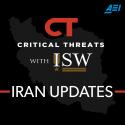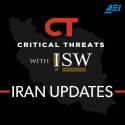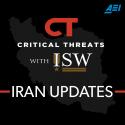Iran Update, May 4, 2023
May 4, 2023 - ISW Press
The Iranian regime is seeking to take advantage of political and economic developments in Syria and Iraq to improve the Iranian economy and advance its strategic goals in the region. Various Raisi administration ministers met with Syrian officials on May 4. Economic and Financial Affairs Minister Ehsan Khandouzi announced the “removal of obstacles” to Iranian export companies operating in Syria following a meeting with several Syrian economic officials. Information and Communications Technology Minister Issa Zare Pour separately signed a cooperation agreement with his Syrian counterpart, Iyad al Khatib, to facilitate Iranian involvement in modernizing Syria’s telecommunications infrastructure. Zare Pour additionally emphasized Iranian satellites’ ability to produce high-resolution images that Syrian officials can use in agriculture, infrastructure, and construction. Defense and Armed Forces Logistics Minister Mohammad Reza Ashtiani and Roads and Urban Development Minister Mehrdad Bazrpash also accompanied Raisi to Damascus. Ashtiani likely sought to secure weapons sales while Bazrpash likely discussed plans with Syrian officials to establish a rail link between Iran and Syria.









